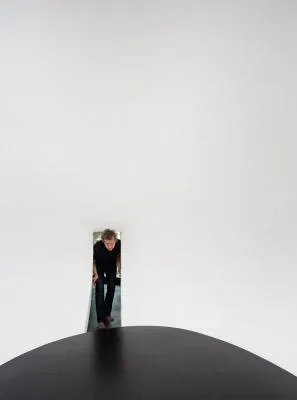
Designing a Home Without Disrupting the Land’s Healing Energy
By Zahid Sardar
Sept. 30, 2017
Agnes Bourne, an interior designer based in Jackson, Wyo., always loved to visit her sister’s rustic dwelling near Spokane, Wash. The 1890s log house was on an astonishing site: next to a lake full of trout, deep within a thousand acres of unlogged forests of Douglas firs and Ponderosa pines. It was filled with open skies, eagles, ospreys, wildflowers and giant boulders, some marked with Native American petroglyphs.
But staying warm in the winter with only a wood-burning stove was tough.
Around 2008, Ms. Bourne, a trustee of the Cooper Hewitt Museum, and architect Tom Kundig, of the Olson Kundig design firm in Seattle, suggested a new house made of materials from the rocky site.
“We were not thinking of just another log cabin,” Ms. Bourne clarified. “This land sits between two mountains and is believed to have healing energies.” The goal was a modern house to exude that spirit and those qualities.
Intrigued by the native petroglyphs, Ms. Bourne invited her son-in-law Johannes Girardoni, the Los Angeles conceptual artist who later exhibited works at the Venice Biennale in 2011, to create something equally evocative for future stewards of the property.
Partly because of its size, “The Infinite Room” had to be placed half inside and half outside the living area. The artist Johannes Giradoni, below, enters the room, which is fitted with an ovoid, featureless, blackened wood platform that represents the absence of light.
“The core of all of my work is about the relationship between light and material,” Mr. Girardoni, 50, said.
Conceived as a skylit, sonorous room — a temple dedicated to the sun — it was to have “both mass and void, fullness and emptiness,” Mr. Girardoni said. “Light and shadows affect the way we perceive things. To prevent shadows, the room needed to be without any corner geometry.” In essence, he wanted an empty chamber with curved white walls and a vaulted ceiling with an oculus.
“I began to work from the inside out, but I really did not know how to make such a structure large,” Mr. Girardoni said.
Mr. Kundig and his team did. They modeled an elliptical egglike interior on a computer and tweaked it until it was 24 feet high, 22 feet deep and 16 feet wide, to control a beam of light streaming in from above, just as the artist wanted.
“A perfect sphere would simply not have worked,” Mr. Girardoni said.
Partly because of its size, the sculpture had to be placed half inside and half outside the living area, so they decided to clad it with weather-resistant Cor-Ten steel segments welded together; a narrow slot, just as wide as the owner’s shoulders, forms an entryway from the living room.
Inside, the sculpture’s curved wood-and-lath framing is covered with a four-inch thick layer of white slake lime, mixed with straw and horsehair, that immediately offers a powerful sensory experience because of its scent.
“I had not worked with lime before,” Mr. Girardoni said, although it is commonly used in his native Austria. “I met an old builder near my summer studio near Vienna and took a weeklong crash course in old-school plastering,” he said. “The finished lime plaster absorbs moisture just like adobe. It is a breathing skin against which sounds reverberate eerily.”
Mr. Girardoni’s all-white creation — titled “The Infinite Room” because light arcs across its walls all day like a pendulum marking time endlessly — is fitted with an ovoid, featureless, blackened wood platform that represents the absence of light. “People seated inside seem to get a heightened awareness of being alive because of the changing light and the acoustics,” Mr. Girardoni said. “Some guests slip inside to chant or meditate. Others cry when they can hear echoes of their breath behind them, and still others beg to leave.”
Several walls inside the house are covered with stacked granite boulders and sliced basalt found on the property, and the concrete floors are polished to reveal stone aggregate from the site. Credit Tegra Stone Nuess for The New York Times
The house is next to a lake full of trout, deep within a thousand acres of unlogged forests of Douglas firs and Ponderosa pines.
Mr. Kundig, whose firm has previously integrated a fully conceived piece with a translucent oculus by the artist James Turrell in another building, found this reverse site-specific collaboration with Mr. Girardoni just as absorbing.
“We took what Johannes was imagining and made it into architecture,” Mr. Kundig said. “We came up with a buildable shape by following his cues.”
The 3,500 square-foot, single-story, steel-reinforced wood frame home is relatively rectilinear, its two asymmetrical wings laid north to south in an H-plan linked together by a glass-wall breezeway. French doors slide open to semienclosed courtyards that have Japanese-style raked gravel beds and scattered rock displays.
The main wing contains a master suite at the north end, open-plan living spaces surrounding “The Infinite Room” in the middle and a garage that doubles as a media room at the south end. The shorter wing contains a north-facing office, a guest room and library in the middle and a south suite for the owner’s spiritual guru, who visits from India where, interestingly, a lunar calendar prevails.
Diagonally opposite “The Infinite Room,” which depends on sunlight for its meaning, the architect placed a conceptual twin: a small steel and glass tower, accessible via a compact spiral staircase, that is just large enough for a bathtub from where the owner can engage in the ancient yogic practice of gazing at the rising moon.